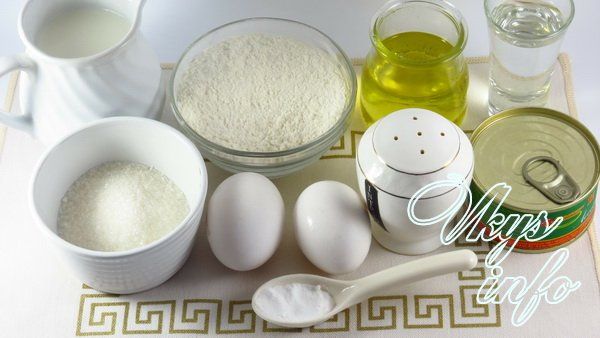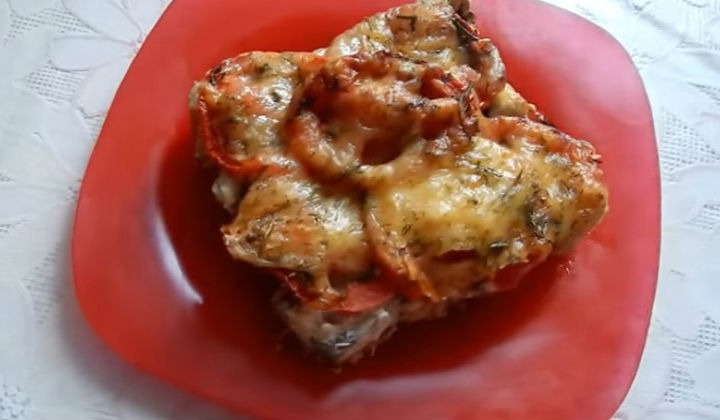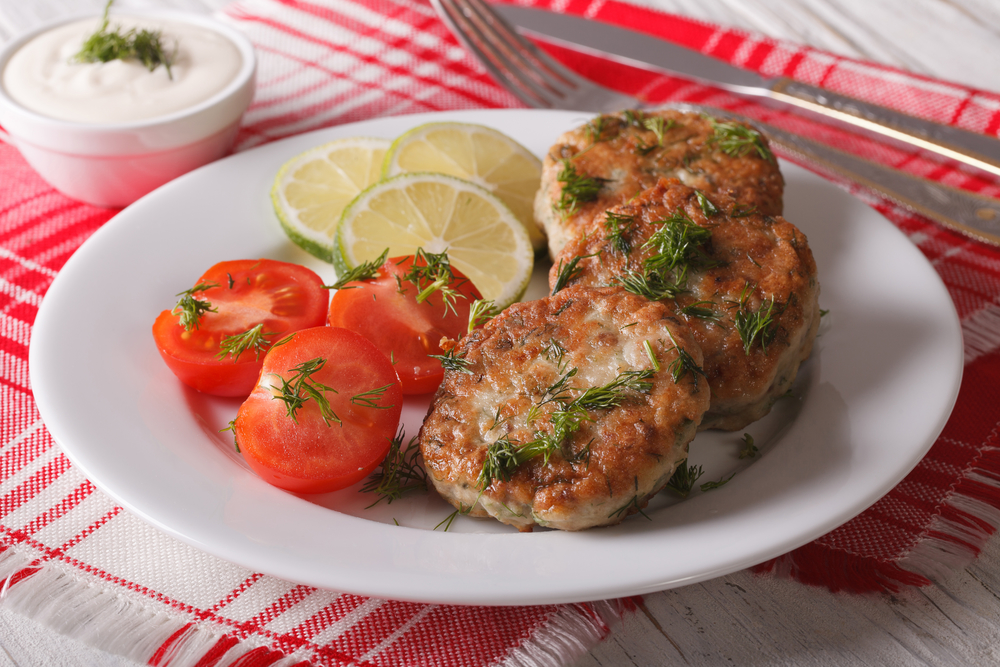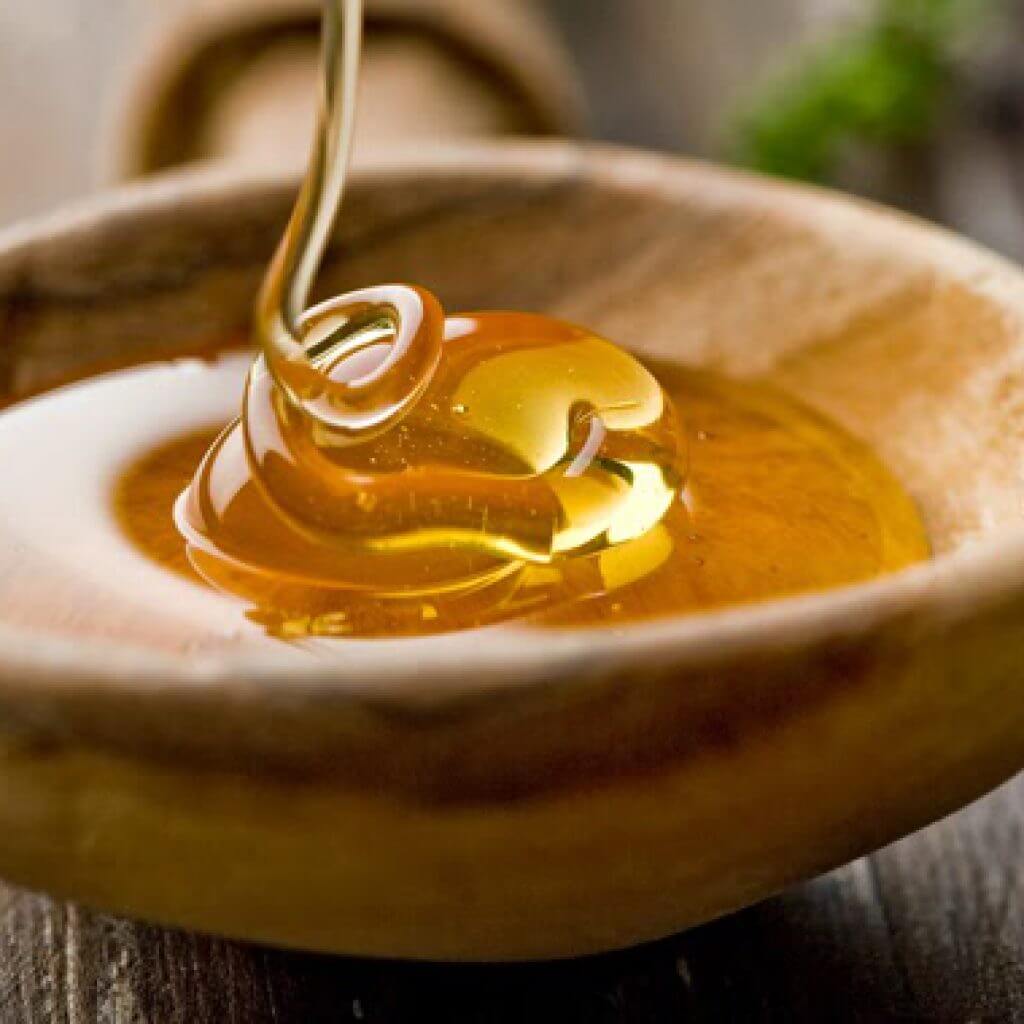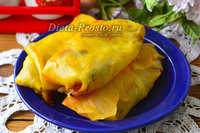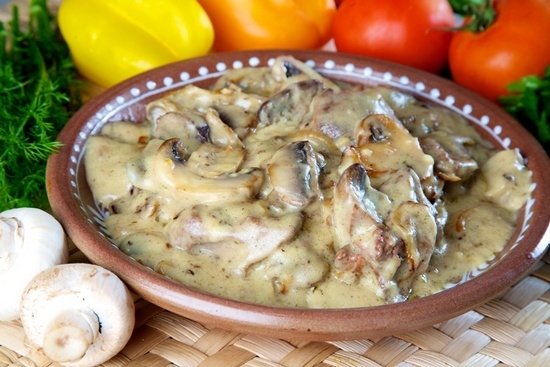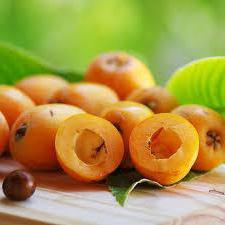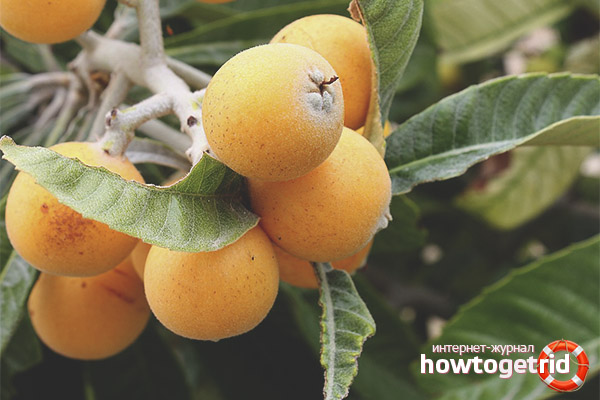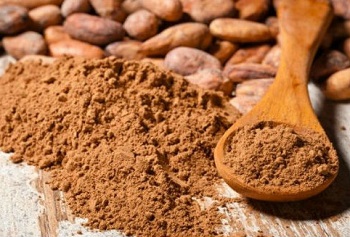Natural vanillin. Where is the product used?
Vanillin is a spice with a pleasant, sweet smell that is extracted from the fruits of vanilla. It is a colorless powder consisting of small crystals. Vanillin is used for the production of baking and confectionery products, as well as to create perfume compositions.
 Natural vanilla is extracted from vanilla pods
Natural vanilla is extracted from vanilla pods
Appearance
Vanillin is extracted from a plant called "flat vanilla." This flower belongs to the orchid family. Vanilla is an evergreen, climbing plant. Growing, it wraps around tree trunks. The leaves are large, ovate, pointed at the end. Inflorescences are very unusual in shape - they remotely resemble a spread out hand. Flowers are about 6 cm in size, usually painted yellow or green. Seeds ripen in long pods, from which spice is later extracted.
 The vanilla pods are still green and they go through a complex drying process
The vanilla pods are still green and they go through a complex drying process
 In the production process for drying vanilla and the extraction of natural vanillin, only manual labor is used
In the production process for drying vanilla and the extraction of natural vanillin, only manual labor is used
 Natural vanillin crystals form on pods during drying in very small quantities
Natural vanillin crystals form on pods during drying in very small quantities
Where grows
The homeland of vanilla is the West Indies, a group of islands located in the Caribbean. At the beginning of the 19th century, this plant was discovered by the Englishman Henry Charles Andrews, and over the next 200 years, vanilla spread throughout greenhouses around the world. Currently, the largest amount of flat vanilla is grown in the southern states of the USA, in Central America and in the north of South America, since there is the most suitable climate for this flower.
 Vanilla plantations are mainly located in Madagascar and Reunion.
Vanilla plantations are mainly located in Madagascar and Reunion.
A method of manufacturing spices
Vanillin is extracted from vanilla seeds, which ripen in pods. First, the seeds are treated with boiling water, then a long process begins, during which the seeds are alternately heated in the sun and steamed in plastic containers. This process takes about two weeks, after which the seeds darken and become dark brown. Then, the seeds are dried and kept for several months, so that the smell intensifies.
The following types of vanilla are cultivated today for the production of vanillin:
- Fragrant vanilla. It grows in Mexico, Indonesia, the Caribbean and Madagascar. It differs in large inflorescences. It has a rich, “warm” aroma.
- Vanilla Antilles. It grows in Central America, at an altitude of 0.5 km above sea level. Most often used as an extract.
- Vanilla Tahitian. The place of cultivation of this plant, which is the result of the crossing of the two species described above, is French Polynesia. This species is grown not only to obtain vanillin, but also for decorative purposes.
This is how natural vanillin is made, but most of the spices sold in stores are man-made vanillin. It is made from various raw materials through synthesis.
 Madagascar vanilla or vanilla bourbon - the highest quality
Madagascar vanilla or vanilla bourbon - the highest quality
 Tahitian vanilla is inferior in taste and organoleptic properties
Tahitian vanilla is inferior in taste and organoleptic properties
Synthetic Vanillin Production
Most of the spices sold in stores are man-made vanillin. It is made from various raw materials through synthesis. The possibility of synthesizing vanillin was discovered at the end of the 19th century in Germany by Wilhelm Haarmann and Ferdinand Timann. The production of synthetic vanillin was the first step towards the creation of artificial flavors. Currently, artificial vanillin can be obtained from a variety of substances, including eugenol, lignin and petrochemical raw materials.
 Synthetic Vanillin - Artificial Flavor
Synthetic Vanillin - Artificial Flavor
Flavor identical to natural
Synthetic vanillin belongs to the group of flavors identical to natural ones. This means that it has the same chemical structure as natural vanillin, and can be used as a food product. A flavor identical to natural, unlike artificial flavor, is found in materials of animal and vegetable origin.

The difference in smell between synthetic and natural vanilla
The difference in flavor between synthesized vanilla and natural vanilla is, in fact, very significant. According to studies, there are four hundred different components in the smell of vanilla and vanillin is just one of them. Therefore, the aroma of real vanilla is much richer and more versatile than the smell of an artificial substitute.
 The aroma of natural vanilla is much softer and more versatile than that of a synthetic analogue
The aroma of natural vanilla is much softer and more versatile than that of a synthetic analogue
Specifications
- white or colorless powder;
- sweet aroma;
- bitter taste.
Nutritional value and calorie content
Nutritional value and calorie content per 100 grams of product
Chemical composition
The composition of natural vanillin includes:
- essential oil;
- gluco-vanillin;
- tannin;
- cinnamon ether.
Where and how to choose
In specialized stores selling professional bakery and confectionery products, vanilla can be purchased in a variety of forms: in pods, in powder, as well as in the form of an extract or essence. Synthesized vanillin is sold at any grocery store.
A quality product should have a strong, rich aroma. If you get vanilla in the pods, make sure they are long, soft and well bent.
 Vanilla pods should be oily and well bent
Vanilla pods should be oily and well bent
 Natural vanillin is very expensive and is produced in scanty quantities, so it is almost impossible to find it on the shelves
Natural vanillin is very expensive and is produced in scanty quantities, so it is almost impossible to find it on the shelves
 You will find synthesized vanillin in any store or in the markets
You will find synthesized vanillin in any store or in the markets
Beneficial features
- calms and relaxes;
- is a good antidepressant;
- has antioxidant and anticarcinogenic effects;
- considered a natural aphrodisiac;
- normalizes metabolism;
- helps relieve allergy symptoms
- has an anti-inflammatory effect;
- is an antimicrobial agent.
Harm
- can cause a severe allergic reaction, manifested in irritation of the skin and mucous membranes.
Butter
Vanilla essential oil has a strong, spicy-sweet aroma that persists for many years. It has found application in medicine, cosmetology and aromatherapy. Vanilla oil is part of many cosmetics and perfumes. It is not only an excellent flavoring agent, but also has a calming and anti-aging effect. The beneficial properties of this oil allow it to be used to combat various diseases. Vanilla essential oil can be used orally, in the form of inhalations or aroma lamps, as well as added to the bath or massage mixture.
 Vanilla essential oil awakens sensuality and boosts mood
Vanilla essential oil awakens sensuality and boosts mood
Application
In cooking
- vanillin is added to butter baking to give it a special flavor;
- vanillin is an essential component of many recipes for sweet creams and sauces;
- housewives often add vanillin to berries and fruit preserves;
- most of the confectionery products, including chocolate, caramel, soufflé and others, have vanillin in their composition;
- sometimes vanillin is used to flavor alcoholic beverages, for example, liquors and some varieties of vodka;
- vanillin is added to dairy and curd products to make them more flavorful.
 Adding vanillin to any milkshake will make the taste of the drink rich and refined.
Adding vanillin to any milkshake will make the taste of the drink rich and refined.
 You won’t get traditional curd Easter without vanilla
You won’t get traditional curd Easter without vanilla
Take 4 eggs and separate the whites from the yolks. Beat the whites slowly, gradually stirring a glass of sugar and a pinch of vanillin. After that, without stopping whipping, pour in the resulting mass of yolk. Then, kneading the dough from the bottom up, pour a glass of sifted flour. Then set the oven temperature to 200 degrees and let it warm up. While the oven is heating, prepare a baking dish. The bottom can be greased with oil or covered with parchment paper. The cake should be baked for 20-25 minutes.

Curd Vanilla Cream
Beat in a homogeneous mass 2/3 of a standard package of butter, 170 grams of cottage cheese and 1 tsp. vanillin. Beat at a low speed. Then add a glass of powdered sugar and beat the mixture again, this time gradually increasing the speed to maximum. The cream is ready!

In medicine
Natural vanillin can be used as an aid to combat the following diseases:
- rheumatic pains;
- digestive disorders;
- fever;
- mental disorders;
- depression
- sleep disturbances;
- diseases of the nervous system;
- skin inflammation;
- poor health on critical days;
- menstrual irregularities;
- intestinal colic.
When losing weight
Many modern weight loss systems include vanilla, but not as a food supplement, but as a powerful antidepressant. Inhaling the sweet aroma of vanilla helps fight bad mood, relieves anxiety and soothes nerves. In addition, when this smell is inhaled, a person develops hormones that block the feeling of hunger.
 Vanillin is always added to protein shakes for weight loss.
Vanillin is always added to protein shakes for weight loss.
At home
If you dilute a bag of vanillin in water and sprinkle clothes and skin with this solution, you can relax in nature without fear of invading midges, as the sweet smell repels these insects.
 Take bags of vanillin on a hike - an aqueous solution of vanillin will save from midges
Take bags of vanillin on a hike - an aqueous solution of vanillin will save from midges
- Natural vanillin is considered one of the most expensive spices in the world.
- Some Native American tribes used vanilla pods instead of money.
Vanilla in pods are the fruits of a perennial plant from the Orchid family. It is used as a spice mainly in confectionery cooking and as a flavoring in the perfumery industry. The name vanilla comes from the Spanish word vainilla, which translates as "pod". The fruits of vanilla are pods.
Vanilla grows in tropical and subtropical climates. The main suppliers of natural vanilla are Madagascar, China and Indonesia. Vanilla gained wide popularity in Europe from the beginning of the 19th century, then it was imported to European countries from Mexico.
Vanilla has a very pleasant aroma, which is inherent in the fruit of only this plant, but the taste of natural vanilla is bitter, therefore, it is added to confectionery in small quantities. An excess of vanilla in a dish can add a bitter aftertaste to it.
Vanilla Pod Information:

The composition of natural vanilla:
Vanilla Pods Contain:
- Carbohydrates - 12.5%;
- Protein - 1.2%;
- Fat - 0.1%.
The chemical composition of natural vanilla fruits includes such mineral elements as calcium, zinc, potassium, magnesium, copper, iron, manganese, sodium and phosphorus.
Vanilla fruits contain vitamins such as B1, B2, B5, B6, B9 and PP.
Vanilla flavor is given to vanilla pods, vanillin, gluco-vanillin, essential oils and cinnamon ether, which are part of them. In addition, tannins are contained in natural vanilla fruits.
The calorie content of vanilla pods is only 287 kcal per 100 grams of product.
How to use vanilla pods in baking:
To prepare a dough with vanilla flavor, not the pod itself is used, but the seeds inside it. Therefore, you first need to extract the seeds from the vanilla pod as follows:
- Immediately before adding the vanilla seeds to the dough, put the vanilla pod on a clean and dry board with the curved end of the vanilla pod pointing up.
- Hold the vanilla pod with one hand and take a small knife in the other hand.
- Carefully cut the vanilla bean lengthwise to the center, so that its edges can be moved apart, but not in 2 parts. Do not hurt your hands! If you want to add half a vanilla pod to a dish, then it must be cut lengthwise to half its length.
- Open the edges of the pod with your hands.
- Gently scrape the seeds from the vanilla pod into the dough, observing the proportions indicated in the recipe. When vanilla is added more than required, the dish may begin to bitter.

How to make vanilla sugar from a natural vanilla pod:
- Take a small clean and dry, hermetically sealed container.
- Cut the vanilla pod along as described above and scrub its contents into a container.
- Put the vanilla pod in a container.
- Pour 40 grams of sugar into the container or better than powdered sugar, it is more quickly and intensively saturated with vanilla aroma.
- Seal tightly and leave for one week.
How to make vanilla extract from vanilla pods:
- Take a small clean, dry and glass half-liter, hermetically sealed container.
- Place 3 vanilla pods in a container.
- Pour half a liter of good vodka or rum into the container.
- Seal it tightly and put it in a cool dark place for 3 months when using vodka and for 1 month when using rum. Shaking the container periodically.
- Add as an ingredient to dishes in the proportions specified in the recipes.
The longer the vanilla extract is infused, the more intense will be its taste and aroma.
How to properly store vanilla pods:
In order for the vanilla pods to retain their vanilla flavor for a long time - up to 5 years - they must be stored in a hermetically sealed glass jar in a dark and cool place.
How much does a line of vanilla weigh:
One vanilla pod weighs about 3 grams.
How to replace natural vanilla pods:
If the recipe contains vanilla bean as an ingredient, but you don’t have it at hand, then you can replace it:
- Vanilla sugar. In a proportion of 1 vanilla pod is equal to 15 grams of vanilla sugar.
- Vanillin. In a proportion of 1 vanilla pod is equal to 1-2 grams of vanillin.
- Vanilla extract. In proportion 1 vanilla bean is equal to 1 teaspoon of vanilla extract.
Technology for the production of vanilla pods:
The technological scheme for the production of vanilla pods is quite complicated, so natural vanilla is so expensive. The production line includes 7 stages:
- At the first stage, the fruits of vanilla are harvested from the trees.
- Fruits are immersed in hot water heated to 85 degrees Celsius in order to wash and disinfect them.
- Then the vanilla fruit is immersed in water heated to 60 degrees Celsius, and left to ferment for a week. After that, the vanilla fruits acquire their own unique aroma and recognizable brown color.
- Then the vanilla is dried in the shade in the open air for several months.
- After a light white coating appears on the vanilla pods, it is ready for use.
- Vanilla is placed in a container and sent to the warehouse.
- At the warehouse, natural vanilla is packaged in packaging and sent for sale to retail outlets and to various industries.

The benefits of natural vanilla pods:
The benefits of natural vanilla are the beneficial effects of the essential oils contained in it on the human body. Vanilla helps restore the nervous system, get rid of anxiety, irritability and stress.
It improves appetite, normalizes the digestive system and improves metabolic processes in the human body.
Natural vanilla is also useful for the work of the muscular system. It helps to get rid of muscle cramps.
In general, vanilla aromas soothe a person, increase mood, create a sense of peace and comfort.
Damage to natural vanilla pods:
Vanilla can be dangerous and contraindicated for people with its individual intolerance and allergies. The essential oils contained in it can cause an allergic reaction. Therefore, people with allergies should consult a doctor before consuming vanilla.
With special care, pregnant women should use vanilla. They should consult their doctor about its use.
To all the rest, vanilla can only bring benefits, with its moderate consumption, as an ingredient in proven dishes.
The cocktail or cream for the cake becomes softer and more refined, and the unique aroma of fresh pastries will be even more saturated if vanilla is added to these dishes. What is it, why confectioners and ordinary housewives love him so much? This issue should be well understood in order to learn how to apply all the useful properties of the product in practice.
Ah, what a fragrant vanilla!
Vanillin owes its unusually spicy aroma to the fruits of a plant native to South America. Vanilla is a "relative" of the orchid, grows on vines and has yellow-white flowers. After they fade, green pods remain on which, upon drying, white crystals form. This is the real natural vanilla.
The first mention of it is associated with the Aztec tribes. The Indians added spice to their traditional drink - hot chocolate. The first European to taste vanilla was Christopher Columbus. It happened at the beginning of the XVI century. Since then, the spice has come to Europe and has become widely used in cooking.
Vanilla sugar at home
If vanillin is obtained in the laboratory by artificial means, then vanilla sugar can be made independently at home. To do this, just take 1 long vanilla bean, 1 kilogram of granulated sugar, a little powder.
To prepare vanilla sugar, the vanilla bean is cut in half lengthwise, the seeds are taken out, ground in a mortar to a powder state and mixed with powdered sugar. After that, the resulting mixture is combined with sugar, the vanilla bean is added to the same and sent together to a dark place for storage for 3-4 days. After the indicated time, the food supplement is ready for consumption.

To get flavored sugar, one vanilla pod will be enough, and the seeds can be used to make some kind of dessert.
Unfortunately, natural flavoring cannot be stored for a long time due to the fact that the pleasant smell disappears quickly. To keep the flavor longer, add it to the dish at the end of cooking.
Choice: vanillin or vanilla sugar
Before you buy a flavoring supplement, you should know how to distinguish a natural product from a synthesized one in the laboratory. Indeed, in fact, vanilla sugar and vanillin are one and the same, the difference is only in the way they are prepared. Of course, vanillin can also be obtained from natural raw materials, but on the shelves in stores to find such a product is almost impossible.
When buying vanillin, you should carefully read the inscription on the label. If the product contains a flavor identical to natural, or ethyl vanillin, then this product is synthesized in a laboratory. It is usually packaged in bags of 1 gram. It is such an aromatic additive that is most often used by confectioners for baking due to the low price for it. One bag of vanillin costs about 3 rubles.
Vanilla sugar is sold in bags, packaged in 8-15 grams. Sugar, as well as crushed seeds of vanilla pods or ethyl vanillin, must be indicated in the composition of such a dietary supplement. The latter option has the same qualities as artificial vanillin. The price for it ranges from 8-10 rubles. Vanilla sugar with a natural vanilla flavor is more expensive - about 30 rubles per bag weighing 15 grams.
When preparing a culinary masterpiece at home, it is better to give preference to a product with a natural composition, and leave artificial substitutes for mass production.
Such a fragrant, alluring vanillin. The benefits and harms of it have been studied almost completely. But they are known to a very narrow circle of people. So we fill the knowledge gap. Moreover, still many people confuse vanilla and vanilla.
Definition
Vanilla is a long brown pod. Vanillin is a synthetic substance, flavor. That’s the whole difference. Therefore, do not rush the seller in the store asking for a vanilla bag or that vanilla pod.
By the way, there are several types of synthetic flavoring. It all depends on the materials from which vanillin is prepared. It can be:
- oil
- paper waste
- tonka bean
- coal tar
Yes Yes exactly. Did you think the product was extracted directly from the pods? Pipes. And more recently, they figured out how to get vanillin even from manure. True, the scientific world did not appreciate the discovery and awarded the scientist Shnobelevka. To be discouraged.
The benefits of vanillin
Vanillin does not bring any health benefits or during treatment. Absolutely. Unless its gentle smell can slightly calm the shaken nervous system or drive away insomnia. But do not smell the vanilla aroma for too long.
After a short time, he becomes obsessive, and then suffocates. The body reacts with aggression and irritability instead of appeasement.
Did you know? It turns out that someone started the tale that vanillin can pacify a flash of anger. And after all, all, as one believed and repeat this heresy. They didn’t even bother to think logically. Well, how can vanillin relieve anger? While a person sniffs a sweet aroma, he will manage to smash everything to hell. And then it will calm down. Of course, it helped vanillin! By the way, you can pour powder into the eyes of a person. Then he certainly will not be up to anger. Hence, here too vanilla is an honor and praise.
What is vanillin good for?
But the benefit of fragrant powder is still there. On the kitchen. There is no need to tell how vanillin is used for culinary purposes. Fragrant spice is added to pastries, puddings, cocoa. Some housewives even add her a pinch to the compote. To smell like in childhood.But few people know that the vanilla smell goes well with meat dishes. Especially if you make sweet and sour fruit sauce, and a little flavor with vanilla.
Tip. Do not sprinkle the spice excessively, trying to enhance the smell of the finished dish. The aroma will become sugary and suffocating, and it will be impossible to eat food due to strong bitterness.
Vanillin in cosmetics
Some sources claim that vanillin also has benefits besides cuisine. Allegedly washing with water with dissolved powder works wonders. For those who are inclined to believe in fairy tales, we advise you to go up a little higher in the article and read again what this flavoring is derived from.
Think for yourself which of the following will benefit your skin and miraculously change it for the better? Right, absolutely nothing. Therefore, do not translate the odorous powder in vain.
If you really want to do something right for the skin and always with vanilla, just add a few drops of essence or solution to your body milk or caring cream. No, this will not increase the usefulness. Such amount of vanillin will not bring harm. Why then add? For flavor. The smell on clean, moist skin lasts a very long time. Though you sniff plenty.
Tip. You can add a few drops to the hair balm. So a delicate sweet aroma will accompany you a little longer.
Fragrances of chemical production are interesting in that they always bring a lot of surprises in laboratory research. However, vanillin is not at all from this story. Its negative aspects were clear from the start. After all, scientists knew what the substance was made from.

Aromatic powder from tonka bean is especially treacherous. It contains a large amount of coumarin. This substance is dangerous because it is not excreted from the body, but gradually accumulates. When a certain concentration is reached, coumarin begins to poison the human body. Especially goes to the liver. After all, it is she who takes the brunt of all toxins and poisons.
But do not be scared. And then you completely stop using vanillin. In order to get poisoned, a person of average body constitution needs to eat 80 g of fragrant powder at a time. But no one in their right mind will eat vanilla with spoons. And not so much is consumed by the average person. Even for a lifetime.
Therefore, you can safely add flavoring to your diet. Of course, in adequate doses. By the way, if you carefully read the inscriptions on the bags with spices, then you can completely avoid the terrible coumarin. Just be careful when buying.
What is the harm from vanillin
Absolutely all sources, like parrots, repeat the mantra one after another: with individual intolerance to fragrant powder, dermatitis and eczema can occur. Who invented this? With individual intolerance, only anaphylactic shock occurs! Is eczema a person at such a moment? Oh, woe-writers. If only they would have searched for the exact information before misleading people.Another very “important” statement of such authors: vanillin is very high-calorie, therefore, not suitable for dietary nutrition. And one more stupid myth. No doubt, the calorie content of the flavor is high. It is 288 kcal per 100 g of product. Read it again. Per 100 g! And how many grams of vanillin do you add to the dough? Maximum 1-1.5. Well, where is the danger to the figure or a contraindication to use in the diet? Always think before believing all sorts of nonsense.
Otherwise, vanillin will not do any harm. Well, unless you overeat to it. Although, this is hardly possible. It tastes very bitter.
It turns out that he is the most ordinary, this vanillin. The benefits and harms of it are no longer a secret for you. Therefore, in a conversation with friends you can show off knowledge. Well, and of course, use the information for personal purposes. For example, in the kitchen. Then your household will thank you. A trifle, but nice.
Video: how to make vanilla sugar from vanillin
In the manufacture of bakery products, special requirements are imposed on vanilla. Conventional vanilla powder at high temperatures loses most of its excellent aroma. For such products, crystalline vanillin is considered the best. It does not lose its properties even at a temperature of more than 200 degrees. Such vanillin is widely used in the manufacture of chocolate and ice cream.
What is vanillin, and how to use it? Vanillin is made from vanilla pods that grow in tropical latitudes, mainly in the Caribbean, South America. Demand for this product is much wider than its offer, so it is also synthesized chemically.
Crystalline vanillin is now produced in countries such as China, Canada, the United States and some European countries. Outwardly, it is a small needle-like crystals of white or yellowish color. His taste is bitter and quite burning. It has a light, pleasant, typical aroma when dry.
It is very important to use this food supplement correctly. Before its use, the question always arises: how to dilute crystalline vanillin so that it reveals its aroma to the maximum. If it is used incorrectly, then the resulting products can be completely without vanilla odor or even bitter in taste.
Crystal vanillin: how to use to achieve maximum effect
First of all, it must be dissolved. It should be noted that it is very poorly soluble in cold water and almost always precipitates. In too hot water, it also does not bring any benefit, but only gives bitterness, while the aroma quickly disappears. Experienced cooks suggest dissolving vanillin in alcohol or vodka. One packet of crystalline vanillin is dissolved in 50 ml of vodka and mixed with cooled sugar syrup (for 400 g of sugar 1 glass of water). This solution can be used as needed.
If alcohol-containing liquids cannot be used in the recipe, or they can spoil the consistency of the finished product, for example, in the manufacture of ice cream, vanillin is mixed with dry ingredients immediately before heat treatment. In baking, it is mixed with flour and sugar. Depending on the quality of crystalline vanillin, from 1 to 10 g may be required per 1 kg of finished dough.

